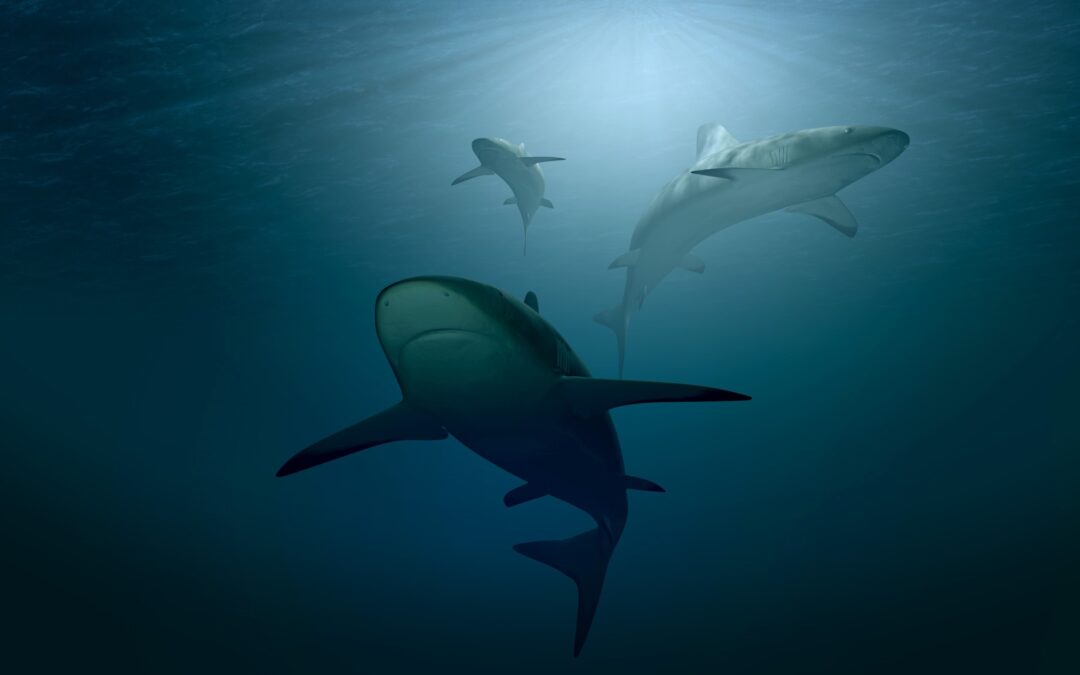There are over 500 shark species across the world. Yet, there is so little we know about these magnificent, and sometimes peculiar creatures. The idea of shark attacks has made us fearful of the ocean, but they don’t give us a full understanding of sharks. We see countless shark attack scenes in movies but rarely do we see the results of an actual shark-human interaction on screen. Today, sharks are one of the most misunderstood and maligned animals in the world. That lack of understanding leads us to believe shark myths and discard a species from our awareness.
Sharks are a vitally important part of our marine ecosystem. Yet they are wrongly feared. Shark myths are more harmful than sharks themselves.
Today we take a look at some of these prevailing beliefs and examine their validity against shark facts. Let’s get started!
1. The Myth: Sharks Enjoy Hunting Down and Eating Humans
The Truth: Sharks don’t prey on humans and shark attacks are fairly rare.
Films like Jaws and Shark Night might make for an entertaining evening but they do contribute to the stereotype of sharks being man-hungry hunters. The truth is, on average, unprovoked shark killings happen around five times in a single year. You are far more likely to die in a tornado, in a bicycle accident, or from a dog attack!
Even lightning strikes are more common than shark fatalities.
Sharks generally tend to ignore people and we are far from their normal diet. Sharks normally feed on other fishes, mollusks, rays, turtles, seals, or other sharks. Out of more than 500 species of shark, only around 10-12 have been associated with attacks on human beings.
2. The Myth: All Sharks Are Enormous Creatures That Roam the Oceans
The Truth: Sharks come in various shapes and sizes.
Whale sharks are the largest fish in the sea, however, not every shark is this big, looming creature as popular media might have you believe. Beyond the great white shark, hammerheads, and whale sharks, exist several smaller, and medium-sized creatures that deserve the same recognition as their larger friends.
The smallest shark in the world – the dwarf lantern shark can even fit the palm of your hand. These little sharks grow up to 6.3 to 7.4 inches long. A fun little fact about dwarf lanterns is that they are bioluminescent with photophores that emit light.
Before the dwarf lantern had been discovered, the spined pygmy shark held the spot for the smallest species of shark.
Other examples of smaller sharks include the Pygmy Ribbontail Catshark, the Smalleye Pygmy Shark, and the Panama Ghost Catshark.
3. The Myth: Sharks Lurk Just Below the Surface
The Truth: There are many species of shark that wander and hunt deep under the sea.
More than 50 percent of shark species reside in the deep ocean. However, if you believe that sharks are out to get you then it only makes sense to believe that they’re always close to the surface, waiting for you to naively enter the sea for a laidback, Sunday swim.
Sharks like the Sixgill shark and Greenland shark have no trouble diving down and wandering depths up to 8200 feet. Some species like the tiger shark stay in deep waters and sometimes venture into shallow waters too.
4. The Myth: Sharks Don’t Have Any Predators
The Truth: Several types of sharks are often preyed on by other creatures and sharks themselves!
While sharks are dangerous to most sea creatures and dwellers of the ocean, they do have to fear other predators. Sometimes, it’s just a shark-eat-shark world, and other times, you have Orcas.
Orca whales have even been known to attack and kill great white sharks.
However, when it comes to a shark’s predators, no one comes close to human beings. Every year, we are associated with millions of shark deaths. We are a far more significant threat to them than they ever were to us.
5. The Myth: Sharks Are Always in Motion to Survive
The Truth: Not all sharks need consistent swimming to breathe.
It’s definitely true that some species of shark need to keep swimming to survive. These include the great white shark, hammerhead shark, whale shark, makos, and the reef shark. They require constant forward motion – a phenomenon called obligate ram ventilation – to breathe.
However, they are in the minority.
More than 400 species of shark do not need to be moving forward to facilitate their breathing.
6. The Myth: Shark Fins Have Medicinal Value and Can Cure Cancer
The Truth: There is no scientific evidence or studies to back up this claim.
The needlessly brutal industry of shark finning owes its roots to the belief that shark fins have medicinal properties. However, the truth is that shark fins contain nutrients that are easily available through numerous other food sources. Additionally, there is no scientific evidence to suggest that the consumption of shark fins can help prevent or treat cancer.
Rather, sharks and other marine animals contain traces of mercury in their bodies, which when consumed, have been associated with other diseases.
7. The Myth: They Can Detect a Single Drop of Blood in the Ocean
The Truth: A shark’s olfactory reception depends on various environmental factors.
Sharks are particularly sensitive to smell, with over two-thirds of their brains being wired to detect various smells through powerful olfactory receptors. However, the idea that they can detect a drop of blood anywhere in the ocean is nothing short of hyperbole.
There are definitely certain species of shark that could smell or detect a drop of blood within a quarter-mile radius, and yes, that is certainly impressive. But this does not imply that this will set them out to seek and hunt down the source of that blood. Additionally, other environmental factors like the direction of sea currents.
So if you were in a large swimming pool with just a shark and you began to bleed, odds are the shark would detect it. Even so, it would depend on the type of shark you’re doing laps with. However, if you begin to bleed in an ocean, there are far too many variables involved and you probably don’t have to worry about being hunted down by a hungry shark.
8. The Myth: Dolphins Are Terrifying to Sharks
The Truth: While some dolphins hunt certain species of shark, some sharks attack dolphins too!
While it is true that some dolphins attack sharks, it is equally true that some sharks attack dolphins. You may have been informed that if you see dolphins around, then it is unlikely to have sharks around as well. However, it is quite common to find them in the same vicinity because they tend to share a similar diet.
9. The Myth: Sharks Can Regrow Their Fins
The Truth: Sharks without fins will most likely bleed to death or get hunted down by other sharks or predators.
While some fish can regrow their fins when cut off, sharks are not the same. Sharks usually bleed to death and are unable to swim properly without their fins. Many just begin to sink to the bottom and are usually attacked by other predators on the way down.
Approximately 73 million or more sharks are killed every year due to finning practices.
Recently researchers have observed a few sharks regrowing their dorsal fins, but these remain in the minority. For the majority, losing their fins is a death sentence.
10. The Myth: Sharks Are Not Very Bright
The Truth: Sharks are actually quite smart and have demonstrated excellent communication techniques.
Sharks are quite complex, extremely curious, and can be quite social. Yet, sharks tend to have this reputation of being hungry, angry predators without a lot of substance, but that isn’t the case.
They have a normal to higher, body-to-brain ratio. Some sharks have even recognized themselves in mirrors, and learn new behaviors through observation, or problem-solving. What’s more, they even remember the solutions to various problems and use them when they encounter similar problems again.
Putting Long-Standing Shark Myths to Rest
Sharks are fascinating creatures that have earned an undeserved bad reputation over the years. With over 500 shark species, most of us have only heard of a handful, and seen even fewer. Shark myths and stereotypes have made us afraid.
However, now that you know the truth about sharks, you have no reason to fear them anymore.
Come take a dive with these beautiful sea creatures and get a first-hand understanding of what they’re all about. We offer a range of shark diving adventures and shark tours in Hawaii. Take your pick and book your trip today!

